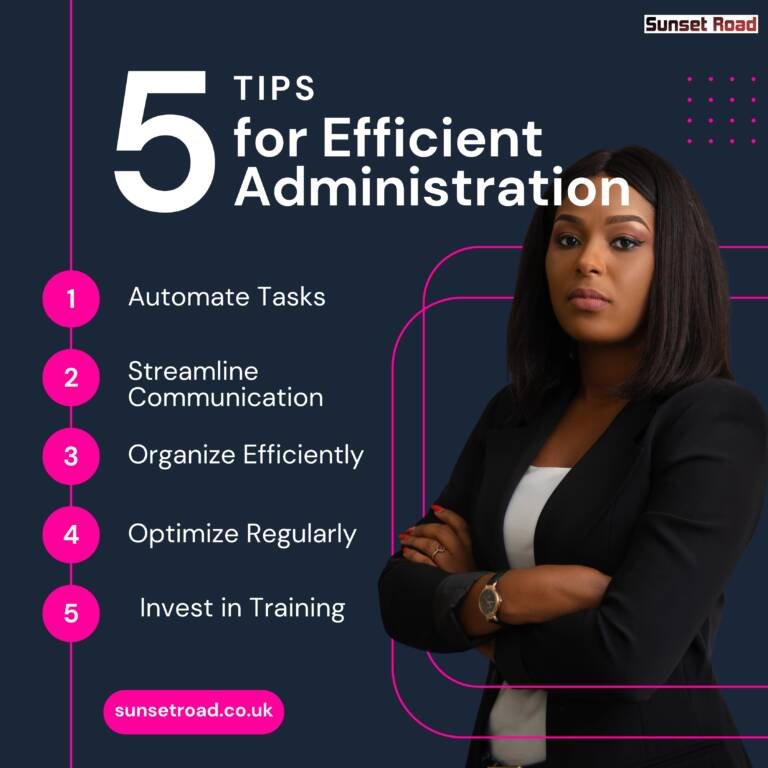Effective HR Strategies for UK SMEs: Building a Productive Workforce
In today’s highly competitive and dynamic market, small and medium-sized enterprises (SMEs) play a vital role in the UK economy. As these businesses face resource constraints, adopting efficient Human Resources (HR) strategies becomes crucial to build and maintain a productive workforce. For SMEs, success hinges on the ability to attract, develop, and retain talent that aligns with their long-term goals. This article outlines various HR strategies that UK SMEs can use to build a more effective and productive workforce, supported by real-world examples.
1. Recruitment and Talent Acquisition
One of the biggest challenges faced by UK SMEs is recruiting the right talent. Unlike large corporations, SMEs often don’t have the luxury of offering high salaries or elaborate perks to attract top-tier candidates. However, with strategic thinking and innovative recruitment methods, SMEs can compete effectively. An effective recruitment strategy starts with defining the skills and competencies required for the role and ensuring job descriptions are clear and appealing. SMEs can also utilize platforms like LinkedIn, local job fairs, and partnerships with universities to connect with potential candidates.

Example: Bright Web Ltd., a digital marketing agency based in London, faced challenges in hiring experienced professionals due to budget constraints. To solve this, they started an internship program with local universities, offering students hands-on experience and a potential full-time job after graduation. This initiative helped them build a pipeline of young, talented professionals, all while keeping recruitment costs low. In addition to internships and apprenticeships, SMEs can offer non-financial benefits such as a strong company culture, flexible working arrangements, and opportunities for career progression. These elements are attractive to professionals who prioritize work-life balance and personal growth over purely financial rewards.
2. Employee Onboarding and Integration
Recruiting the right employees is only the first step. Proper onboarding is essential to ensure new hires integrate into the company’s culture and understand their role within the organization. A well-structured onboarding process not only improves job satisfaction but also accelerates the time it takes for employees to become productive. An effective onboarding program should include orientation, training, mentoring, and continuous check-ins. SMEs can focus on creating a welcoming environment and clearly communicating expectations from day one.
Example: A retail SME based in the Midlands created a 30-day onboarding program, which included both formal and informal training sessions. New employees were paired with experienced staff members who acted as mentors. This personalized onboarding approach helped new hires quickly adjust to their roles and feel part of the team, resulting in higher productivity and lower turnover.
Communication: The Cornerstone of Effective Crisis Management
One of the most critical aspects of HR’s role in crisis management is communication. Clear, timely, and transparent communication is essential for maintaining trust and morale among employees. HR must ensure that all stakeholders, including employees, management, and external partners, are kept informed about the situation, the steps being taken, and any changes that may affect them.
Example: In the aftermath of a natural disaster, a large corporation’s HR department took the lead in communicating with employees about the status of the office, safety protocols, and resources available for those affected. By providing regular updates and a dedicated ,
3. Employee Training and Development
Investing in employee training and development is critical to building a skilled and productive workforce. Continuous learning not only improves employees’ performance but also ensures that businesses stay competitive in rapidly evolving industries. In a digital economy, where technology and processes change frequently, staying updated on the latest tools and practices is essential for business growth. SMEs can implement training programs tailored to their industry and employee needs. These may include technical workshops, online learning platforms, leadership development, and mentorship opportunities. Additionally, many SMEs opt for cross-functional training, which enables employees to acquire diverse skills and improve operational flexibility.
Example: CodeBright, a London-based tech startup, recognized the importance of keeping their developers up-to-date with the latest programming languages and software development techniques. They partnered with online learning platforms to provide staff with access to relevant courses. This not only helped retain talent by offering career development opportunities but also reduced the company’s dependency on external consultants. Training is not just limited to technical skills. Leadership and soft skills development are also important in cultivating a productive workforce. SMEs should offer training in communication, conflict resolution, time management, and leadership to foster a more collaborative and empowered team.
4. Performance Management and Feedback Systems
Performance management is one of the key areas where SMEs can optimize their workforce’s productivity. A strong performance management system ensures that employees remain aligned with the company’s goals while being held accountable for their performance. Unlike large corporations with rigid structures, SMEs can adopt a more flexible and personalized approach to performance management. Setting clear expectations and regularly providing feedback creates a culture of transparency and continuous improvement. Managers should work closely with employees to establish both short-term and long-term goals. A performance management system that incorporates regular feedback, goal-setting, and employee recognition can drive productivity and job satisfaction.
Example: A Manchester-based SME in the construction industry implemented a goal-setting framework where employees and their managers collaboratively set quarterly targets. Every three months, employees’ performance was reviewed, and constructive feedback was provided. This allowed for adjustments to be made in real time, leading to improved project delivery and employee engagement. Additionally, implementing technology, such as HR software, can streamline the performance management process. With tools for tracking goals, performance metrics, and feedback, SMEs can gain valuable insights into employee performance and identify areas for improvement.
5. Employee Engagement and Motivation
Employee engagement is directly linked to productivity. Engaged employees are more likely to be committed to their work, contribute ideas, and stay with the company for longer periods. For SMEs, fostering engagement can often be more personal and hands-on than in larger corporations, allowing for greater flexibility in how employees are motivated. Motivational strategies may include recognition programs, open communication channels, and fostering a sense of ownership among employees. Building a strong company culture where employees feel valued and their input is heard is crucial to engagement. Employees are more motivated when they see their contributions are making an impact on the business.
Example: A Birmingham-based hospitality SME launched a simple “Employee of the Month” program where peers could nominate colleagues who demonstrated excellence in customer service or teamwork. This small initiative had a significant impact on employee morale, as staff felt appreciated and recognized for their hard work. Engagement can also be enhanced by involving employees in decision-making processes. When employees feel their opinions are valued and that they can contribute to the company’s direction, they are more likely to be motivated and invested in the company’s success.
6. Flexible Working Policies
The COVID-19 pandemic accelerated the adoption of flexible working arrangements in many industries. Offering flexibility in work schedules and locations is now a key driver of employee satisfaction and productivity, especially for SMEs. Flexibility in working hours, hybrid working models, and remote work options have proven to increase employee wellbeing while maintaining, and often boosting, productivity. For UK SMEs, where resources are often constrained, flexible work arrangements can also help reduce overhead costs, such as office space. Moreover, by offering flexibility, SMEs can attract talent from a broader geographical area, widening the pool of candidates and increasing diversity in their workforce.
Example: MediaConnect, a small PR firm in London, shifted to a hybrid working model where employees worked from the office three days a week and remotely for the remaining two days. The flexible approach was welcomed by employees, particularly those with long commutes or caring responsibilities, and it led to a marked increase in productivity and job satisfaction. Offering flexible work hours can be particularly beneficial for SMEs with younger or tech-savvy workforces, where autonomy and work-life balance are often valued more than traditional 9-to-5 office routines.
7. Health and Wellbeing Initiatives
Employee wellbeing is closely tied to productivity. With increasing awareness of mental health and the importance of work-life balance, SMEs must implement wellbeing initiatives to ensure their workforce remains healthy and motivated. Providing mental health support, promoting a good work-life balance, and offering physical wellness programs can significantly reduce employee absenteeism and increase productivity.
Example: A finance SME in Glasgow introduced a “Wellness Wednesday” initiative, where employees were encouraged to take time out of their day for activities like yoga, meditation, or a walk outside. This initiative reduced employee stress levels and improved overall job satisfaction, leading to fewer absences and higher levels of engagement. SMEs can also offer flexible time-off policies, mental health days, or access to counseling services. Prioritizing employee wellbeing not only boosts morale but also helps reduce burnout, leading to higher levels of long-term productivity.
8. Compensation and Benefits
While SMEs may not be able to offer the same salary packages as large corporations, they can still provide competitive compensation by offering creative and flexible benefits. Understanding what employees value most and tailoring benefits packages accordingly can be a powerful way to attract and retain top talent. Benefits like flexible working hours, opportunities for professional development, additional vacation time, or health and wellness programs can outweigh salary limitations. Offering equity or profit-sharing options can also make employees feel more invested in the company’s success.
Example: A Bristol-based graphic design firm offered its employees a flexible leave policy that included the option to take additional paid time off for personal projects. Although the company couldn’t compete with larger agencies in terms of salary, they found that offering flexibility and creative freedom attracted talented individuals who were passionate about their work.
9. Diversity and Inclusion
Creating a diverse and inclusive work environment is not only a moral imperative but also a business advantage. A diverse workforce brings in varied perspectives, leading to more innovation, problem-solving, and a stronger connection with diverse customer bases. For SMEs, fostering an inclusive culture can set them apart from competitors, attract top talent, and drive better business outcomes. Inclusive hiring practices, diversity training, and promoting open communication are key steps SMEs can take to create a more inclusive workplace. SMEs should also focus on creating policies that ensure all employees, regardless of gender, race, disability, or background, feel valued and supported.
Example: TalentForge, a small recruitment agency in Leeds, introduced a diversity policy aimed at attracting candidates from underrepresented backgrounds. They also offered unconscious bias training to staff, which improved hiring practices and led to a more diverse and innovative team.
10. Legal Compliance and Employee Rights
Navigating UK employment law is crucial for SMEs to avoid costly legal disputes and ensure a fair working environment. Employment laws in the UK are stringent, covering aspects such as minimum wage, working hours, employee benefits, discrimination, and health and safety. Ensuring compliance with these regulations protects the company and fosters a positive work culture. SMEs should regularly review their contracts, working conditions, and policies to ensure they are fully compliant with UK laws. It’s also important to educate managers and employees about their rights and responsibilities in the workplace to prevent disputes.
Example: After facing a fine for not adhering to minimum wage regulations, a manufacturing SME in Sheffield implemented strict HR policies to ensure compliance. They hired a part-time HR consultant to review their contracts and ensure wage compliance. As a result, they improved employee satisfaction and avoided further legal issues.
Conclusion
For UK SMEs, effective HR strategies are the cornerstone of building a productive and motivated workforce. From recruitment and training to employee wellbeing and flexible working, these strategies are essential to overcoming the resource limitations that smaller businesses often face. SMEs can foster loyalty, boost engagement, and drive innovation by investing in their employees. By implementing strategies tailored to their unique needs, such as flexible work policies, personalised onboarding programs, and a focus on diversity and inclusion, SMEs like Bright Web Ltd., CodeBright, and TalentForge have demonstrated that smaller businesses can compete with larger corporations and thrive in the UK market. Through a thoughtful, proactive approach to HR, SMEs can ensure that their employees remain the driving force behind their success in an ever-evolving business landscape.










